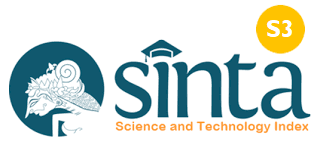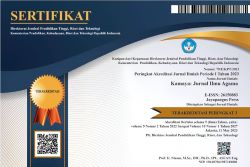Strategi Pembinaan Dakwah Santri Di Pondok Pesantren Babul Hasanah Desa Maggis
DOI:
https://doi.org/10.37329/kamaya.v6i2.2422Keywords:
Development Strategy, Santri's Da'wah, Islamic Boarding SchoolAbstract
This research aims to find out the coaching strategy in improving the preaching of students at the Babul Hasanah Islamic Boarding School Batang Lubu Sutam district. This research uses a descriptive method with a qualitative approach. This research is a type of field research (field research) and literature (library research). Primary data sources were taken using data collection techniques in the form of interviews and observations in addition to secondary data as supporting data obtained indirectly. The data that has been collected by the researcher is then analyzed using techniques in the form of data reduction, data display and conclusions. The results of this study indicate that at the Babul Hasanah Islamic Boarding School, there are a series of activities that refer to improving the quality of students, both in terms of religion and their abilities. Da’wah coaching strategies carried out by pesantren through formal and non-formal activitiesby conducting a coaching that links a series of strategies, in order to achieve the desired goals. The coaching is stimulus in nature, namely the teacher designs special actions, implements them through a communication approach with the aim of influencing students. The coaching process that is carried out also includes the comfort of the students at the Babul Hasanah Islamic Boarding School, with these actions it is hoped that it can improve the students' preaching abilities at the Babul Hasanah Islamic Boarding school.
References
Azra, A. (1997). Pesantren Kontiunitas dan Perubahan. In Sebuah Pengantar Dalam Nurcholis Madjid, Bilik-bilik Pesantren: Sebuah Potret Perjalanan. Yogyakarta: Paradigma.
Effendy, O. U. (2002). Ilmu Teori dan Filsafat Komunikasi. Bandung: PT Citra Aditya Bakti.
Fatah, R. A., Taufik, M. T., & Bisri, A. M. (2005). Rekonstruksi pesantren masa depan: Dari tradisional, modern, hingga post modern. Jakarta: Listafariska Putra.
Haynes, M., Thompson, S., & Wright, M. (2002). The impact of divestment on firm performance: Empirical evidence from a panel of UK companies. The Journal of Industrial Economics, 50(2), 173–196.
McQuail, D. (2010). Mc Quail’s Mass Communication Theory. Australia: Sage Publications, Ltd.
Meleong, L. J. (2007). Metodologi Penelitian Kualitatif. Bandung: Remaja Rosdakarya.
Milles, M. B., & Huberman, M. (1986). Qualitative Data Analysis: A Sourcebook of New Methods. Australia: Sage Publication, Ltd.
Nasional, P. B. P. (2019). Kamus Besar Bahasa Indonesia. Pusat Bahasa Pendidikan Nasional.
Nata, A. (2010). Sejarah Pertumbuhan dan Perkembangan Lembaga-Lembaga Pendidikan Islam Di Indonesia.
Sedarmayanti. (2011). Manajemen Sumber Daya Manusia. Bandung: Refika Aditama.
Shihab, M. Q. (2022). Tafsir Al-Misbah. Tangerang: Lentera Hati.
Skinner, M. M. (2010). Brief Communication: Contributions Of Enamel-Dentine Junction Shape And Enamel Deposition TO Primate.
Sugiyono. (2012). Metode Penelitian Kuantitatif, Kualitatif dan R & D. Bandung: Alfabeta.
Tajiri, H. (2011). Integrasi kognitif dan perilaku dalam pola penanaman disiplin santri di Pesantren Al-Basyariah Bandung. Al-Tahrir: Jurnal Pemikiran Islam, 11(2), 415–432.
Winartha, I. M. (2006). Metodologi Penelitian Kuantitatif. Sleman: Gaha Ilmu.
Downloads
Published
How to Cite
Issue
Section
License
Copyright (c) 2023 Kamaya: Jurnal Ilmu Agama

This work is licensed under a Creative Commons Attribution-ShareAlike 4.0 International License.
An author who publishes in the Kamaya : Jurnal Ilmu Agama agrees to the following terms:
- Author retains the copyright and grants the journal the right of first publication of the work simultaneously licensed under the Creative Commons Attribution-ShareAlike 4.0 License that allows others to share the work with an acknowledgement of the work's authorship and initial publication in this journal
- Author is able to enter into separate, additional contractual arrangements for the non-exclusive distribution of the journal's published version of the work (e.g., post it to an institutional repository or publish it in a book) with the acknowledgement of its initial publication in this journal.
- Author is permitted and encouraged to post his/her work online (e.g., in institutional repositories or on their website) prior to and during the submission process, as it can lead to productive exchanges, as well as earlier and greater citation of the published work (See The Effect of Open Access).
Read more about the Creative Commons Attribution-ShareAlike 4.0 Licence here: https://creativecommons.org/licenses/by-sa/4.0/.





